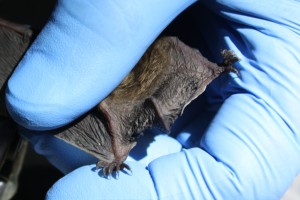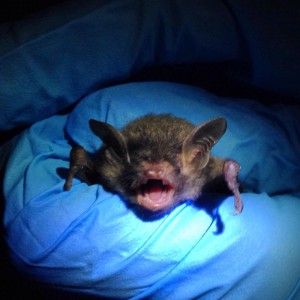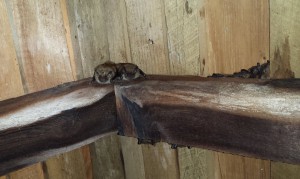Identifying with New Jersey’s Fascinating Bats
Hard to believe, but October is already here! And that can only mean one thing – bats! Everyday throughout the month of October, follow CWF on social media and our blog to fly high with these incredible creatures of the night! Each day we will have fun facts, quizzes, and beautiful photos highlighting these amazing animals and the work CWF does to protect them.
Our previous coverage included an overview of bats in New Jersey from our biologist, a look into the threats bats are facing today, a reality check on some myths and legends surrounding bats, and shared some examples in ways you can get involved in our efforts to save bats. This week, for the final week of October, join CWF bat biologist Stephanie Feigin in the field!
Make sure to follow us everyday on Facebook and Twitter and read our blog every Friday for our #31daysofbats!
by Stephanie Feigin

I think it is surprising how little people know about bats considering how beneficial they are to humans. From eating the bugs that bite us and reducing the need for pesticides on our farms, to helping doctors learn the advantages of echolocation to the blind, knowledge of these important creatures should be at least as common as the sight of them flying overhead. Since I have started working on Conserve Wildlife Foundation’s bat projects, I have noticed just how fascinated people can be with bats, and how excited they are to learn more about these elusive creatures of the night.
In giving presentations on bats in New Jersey, I realize how many people still believe the myths about bats and generally regard them as spooky or creepy, not beneficial and cute I enjoy sharing my knowledge and experiences in order to correct the many misconceptions.The first time I saw a bat it was hiding behind a beam in the attic of an old church. I was shocked at how adorable and small the bat was, and I still get that same feeling every time I see some tiny bat ears poking out over top of a beam or tiny bat eyes looking back at me.
Every time I go out, whether it is to monitor a site where CWF has installed bat houses and do a bat count, or to assist other researchers in a banding survey of bats getting ready to hibernate, or even just to walk along the canal by my house with the acoustic detector, I have felt a connection to these animals. I love the dynamics of their roosts, the way they snuggle together for warmth, and the little chatter sounds they make when they are getting ready to go out to hunt for the night.

There is so much to learn and understand about bats. One thing I have especially loved learning is the subtle differences between one bat species from the next. Have you ever looked up and seen a bat flying overhead? But instead of just saying, “Hey, that’s a bat!” Have you ever spent time thinking, “I wonder what type of bat that is?” Well I have, and sometimes it is not that easy to decipher. We have nine different bat species in New Jersey. Some of these are easier to identify than others. The hoary bat, for example, is easily identified because it is largest bat in New Jersey, with bodies measuring from 5 to 6 inches and wingspans reaching up to 17 inches. These bats also have a lower frequency of call, making it easy to read on a sonogram.
Some of our other bat species however, possess very subtle and small differences, making them much harder to distinguish from one another. All four of these species are “cousins” and are part of the Myotis genus. In New Jersey, the bats in the Myotis genus are the little brown bat (Myotis lucifugus), the Indiana bat (Myotis sodalist), the long-eared bat (Myotis septentrionalis), and the eastern small-footed bat (Myotis leibii).

In my opinion, it is the hardest to identify Indiana bats from little brown bats. One way to do this is by the length of their toe hairs. Indiana bats will have smaller toe hairs than the little brown bats, and they will not extend past their toenails. Indiana bats also have a keeled calcar, or a foot spur of cartilage, that supports the membrane between the foot and tail. This looks like a tiny strip of extra skin on the membrane between the bat’s foot and tail.
Another way to identify which bats are in the area is with the use of an acoustic detector. All of the myotis bats have very similar calls, all in the same frequency range, making it very hard to identify one bat from the other on a sonogram. Even the computer program we use will not take a guess as to which myotis it is because their calls are so similar! Since the first time I went out with the acoustic detector, I have been enthralled by the different chatters of the bats, from the feeding buzz to their chatters to each other while flying and hunting for food. I have gained a new perspective on the world of bats and me developed a true connection to these animals.

It is exciting to be a part of the bat projects at CWF and to have the opportunity to understand bats further, help research and implement ways to protect them, and educate the public about who these animals really are. They are not creepy, scary rodents who will attack you and fly into your hair. They are adorable, helpful mammals that I think everyone can find a way to appreciate, just like I have.
Stephanie Feigin is a Wildlife Ecologist for the Conserve Wildlife Foundation of New Jersey.
Discover more from Conserve Wildlife Foundation of NJ
Subscribe to get the latest posts sent to your email.